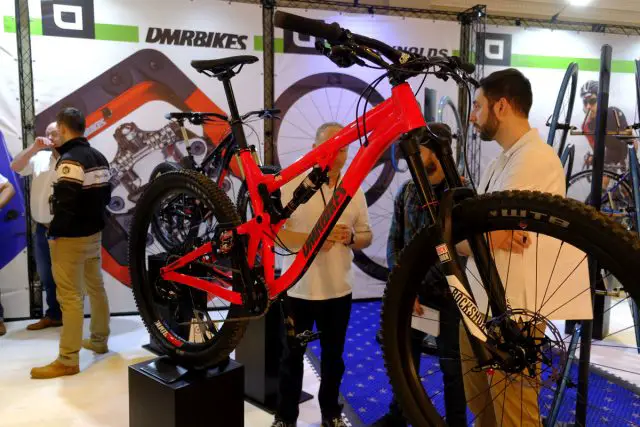
It’s alloy, features 160mm of travel front and rear, and uses an all-new suspension design. And yes, it’s from DMR Bikes.
As a company best known for its flat pedals, street tyres and slack steel hardtail frames, British brand DMR has been on a steady march in recent times to broaden its product range to a wider mountain biking audience. First came new components such as the Wingbars, Zone rims and the Axe cranks, and then came the brand new V-Twin clipless pedal, and that was kind of a big deal. For a company that was largely founded on bombproof flat pedals and a dirt jumping image, producing a clip-in pedal has been the biggest shakeup in the product range since day dot. But it’s a product that riders and shops have been asking for for years, and from all reports, there’s been a huge amount of consumer interest.
As DMR continues to spread its wings into the trail, all mountain and enduro arenas, it has just released one of its biggest and most progressive products to date. Its name? The Sled.
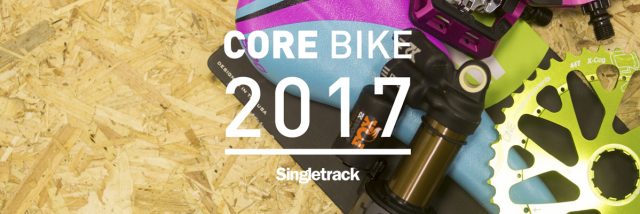
DMR Sled Specifications
- 6061 series alloy frame
- 160mm rear travel travel
- ‘Orbit Link’ virtual pivot suspension design
- RockShox Monarch RT3 Debonair shock
- Collet style main pivot hardware
- 27.5in wheels
- Rated for 160-180mm fork travel
- 65.5° head angle (w/160mm travel fork)
- 430mm chainstay length
- Syntace 148x12mm thru-axle
- 73mm threaded bottom bracket
- Internal front triangle routing
- Clearance for up to 2.5in tyres
- Colours: Metallic Black or InfraRed
- Sizes: Small, Medium, Large, X-Large
- Frame RRP: £1599 (w/RockShox Monarch Shock)
- Bike RRP: £3500
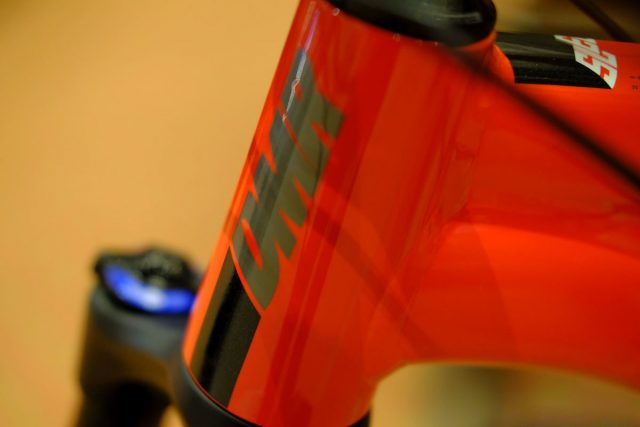
Built from hydroformed and butted 6061 alloy tubes, the Sled is the first alloy bike to come from DMR Bikes. The British brand has typically chosen to work with steel, and has usually favoured hardtails. There is of course, the Bolt full suspension bike that was released back in 2011, but DMR admits that this is more of a dirt jump/slopestyle/lunatic machine with a relatively slim appeal. To produce a longer travel and more versatile full suspension bike all day pedalling capability, they wanted a clean slate.
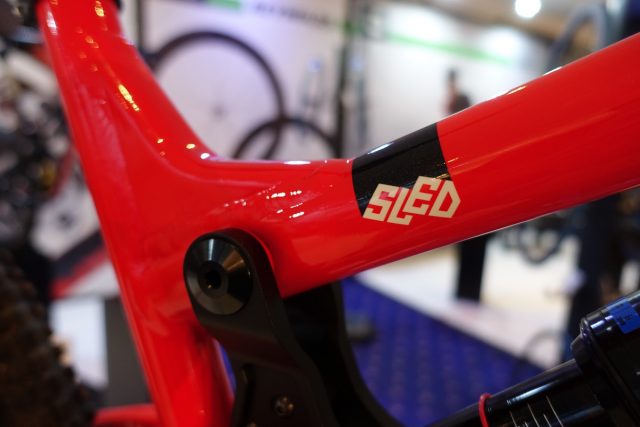
Interestingly, DMR did begin the initial prototype with steel tubing. But to build a frame with the strength, stiffness and pivot durability they wanted, the prototypes proved to be far heavier than practical. As in 50+ pounds for a complete bike. While DMR has strong ties with slender steel tube frames, this was a case of choosing the right material for the right bike, regardless of any ‘tradition’ that they felt pressured to uphold. The other reason boiled down to cost. To produce the Sled in steel would have produced a significantly more expensive product, and once weight was factored in, it became pretty clear that alloy would be the way forward.
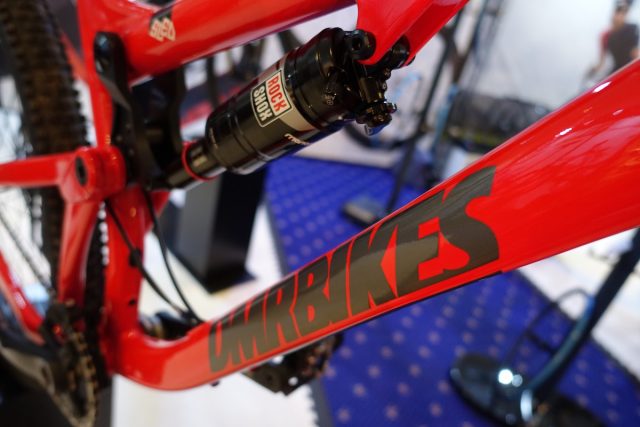
The suspension design is also a departure for DMR. The current Bolt frame uses a single-pivot platform, which has a main pivot that rotates around the bottom bracket. This allows for easy singlespeed setup, as there is no chain growth and therefore no change to chain tension during compression of the suspension. It works well for that style of bike, and it allows for the use of a solid one-piece swingarm, but it wouldn’t quite do the job here. DMR wanted to retain some of the same design aspects, whilst aiming for a more pedal-efficient suspension design with greater tune-ability.
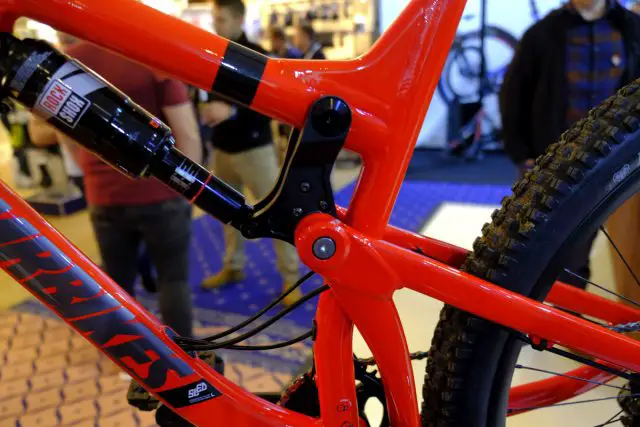
A chance meeting over some beers in Taiwan between DMR and a chap called Dave Earle resulted in a discussion about pursuing a virtual pivot design. You might recognise that name as belonging to the guy who owns the Sotto Group. Responsible for Yeti’s Switch suspension design, the Sine suspension on the Alchemy Arktos, Earle has had years of experience working with the likes of Bontrager, Specialized, Santa Cruz, and multiple mountain bike companies who have licensed his suspension designs. To say Earle has industry experience would be a complete understatement.
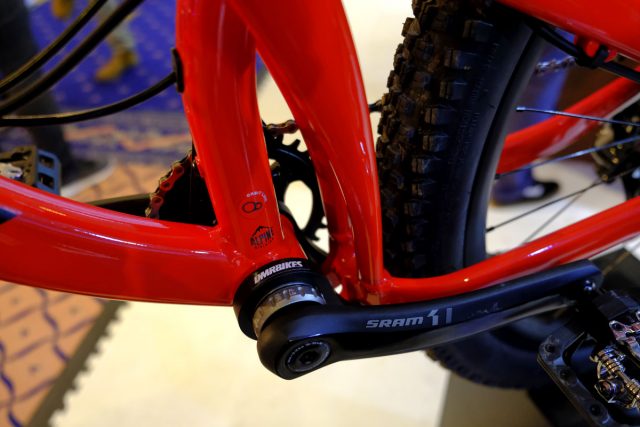
In early discussions with DMR back in 2015, Earle pointed out that the VPP patent would be drying up soon, which would leave the door open for DMR to pursue a virtual pivot design without fear of patent infringement. Some ideas went back and fourth, and a new interpretation on the virtual link arrangement was suggested that would make use of a bottom bracket-mounted main pivot much like the Bolt.
But rather than just using a single pivot rotating around the BB shell, the Orbit Link suspension would utilise a small link that would rotate around the bottom bracket. Combined with an upper rocker link activating the rear shock, the whole swingarm could ‘float’, allowing for added control over aspects such as axle path and leverage ratios.
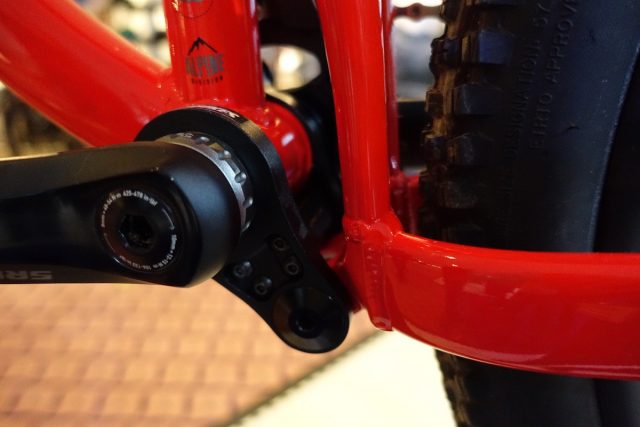
While the suspension design does appear very similar to a VPP design (and indeed the Sled bears a striking resemblance to a Santa Cruz Bronson or Nomad), this Orbit Link does provide a point of difference, and there are more subtle changes in suspension and frame design that separate the Sled from its American competitors.
Interestingly, the lower pivot on the Orbital Link doesn’t actually rotate that much. It only experiences a subtle rotation, with the BB-mounted pivot doing most of the work through the travel. As such, there isn’t a huge amount of chain growth built into the Sled’s suspension action. As such, the suspension behaviour is likely to be different to a VPP bike like a Santa Cruz or an Intense. But we’ll have to reserve judgement before we can get the chance to ride one, which should hopefully be soon.
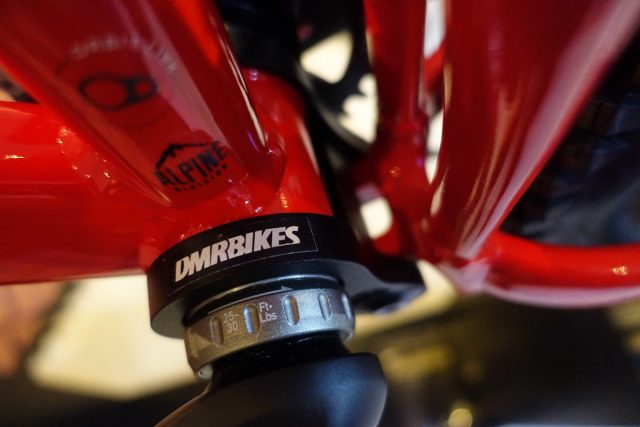
Like the rest of the frame, the Orbit Link itself is made from alloy. It consists of two separate plates that are bolted together in the middle, which rotate around two large cartridge bearings that sit on the outside of the frame’s BB shell.
The bottom bracket shell itself is a 73mm English threaded BB, so that means you can bung in a regular ol’ bottom bracket without need for press-fit cups.
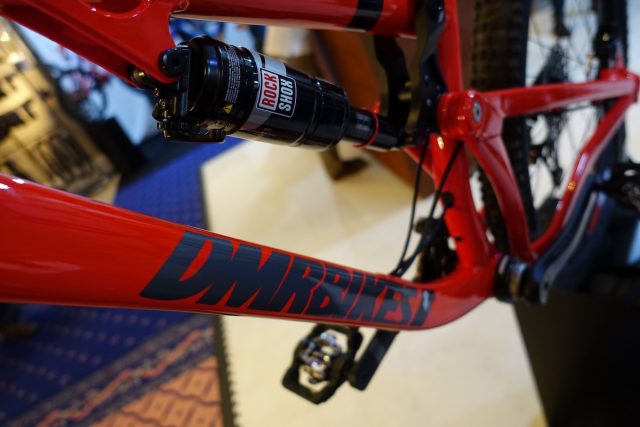
The Sled will come equipped with a RockShox Monarch RT3 rear shock, which controls the 160mm of travel out back. According to DMR though, the Sled frame will comfortably fit a piggyback shock (albeit in the reverse direction), and internal testers have also been testing frames with coil shocks too. One of the other aspects DMR was keen to point out with the new bike is the pivot hardware. Using massively oversized alloy axles, each pivot is locked into place with an expanding collet that helps to minimise any room for wiggle, while keeping things super stiff.
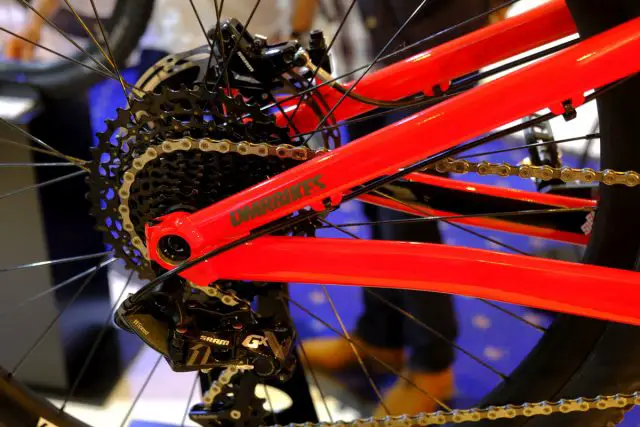
DMR elected for a tidy Syntace X-12 thru-axle for the rear of the swingarm, which slots through a 148x12mm rear hub. The dropouts are beefy hunks of alloy that allow for a large welding surface area to keep everything nice and stiff out back.
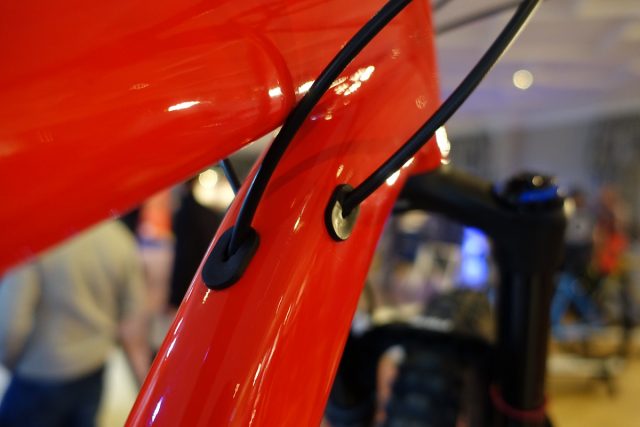
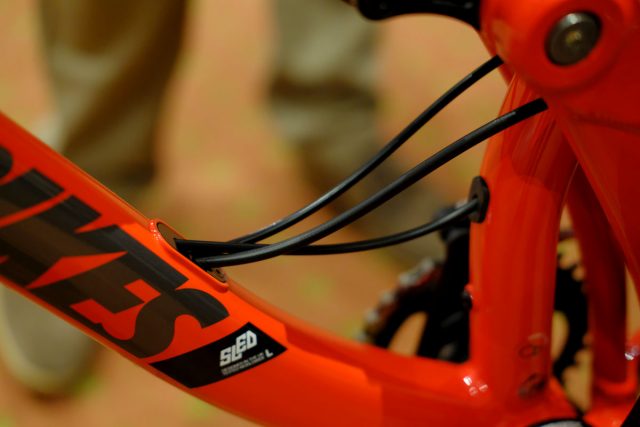
The DMR Sled has routing for an internal dropper post, while the rear derailleur and brake hose run externally down the seat stays of the rear swingarm.
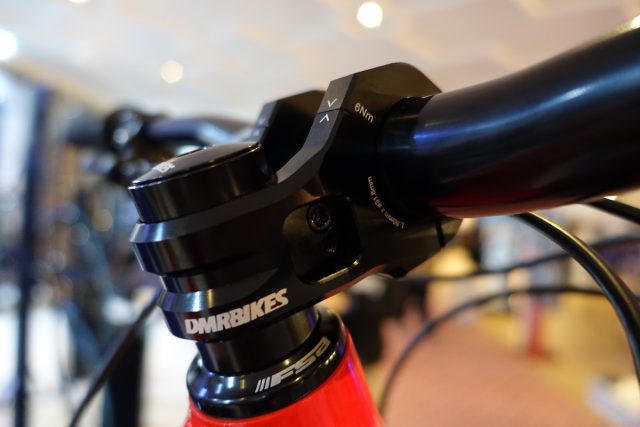
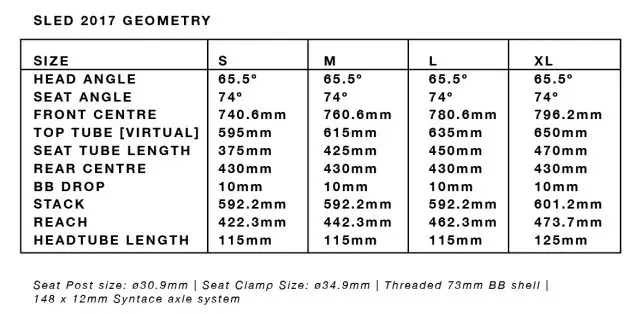
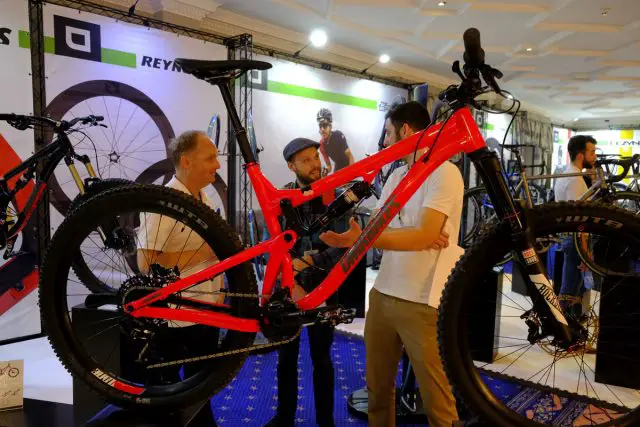
The Sled will be available in both Metallic Black and InfraRed colour options, with the first batch of frames due to arrive in February 2017, and more stock arriving a month or so later. You’ll be able to get it as a frame & shock only, or as a complete bike for £3500 as shown here on the InfraRed display bike.
While we were at Core Bike, we had Adam from Upgrade Bikes take us through some of the details on the new Sled.
If you’ve got any questions about the new DMR Sled, then post them in the comments section below and we’ll do our best to find out the answers for you.
Comments (1)
Leave Reply
Post Comment
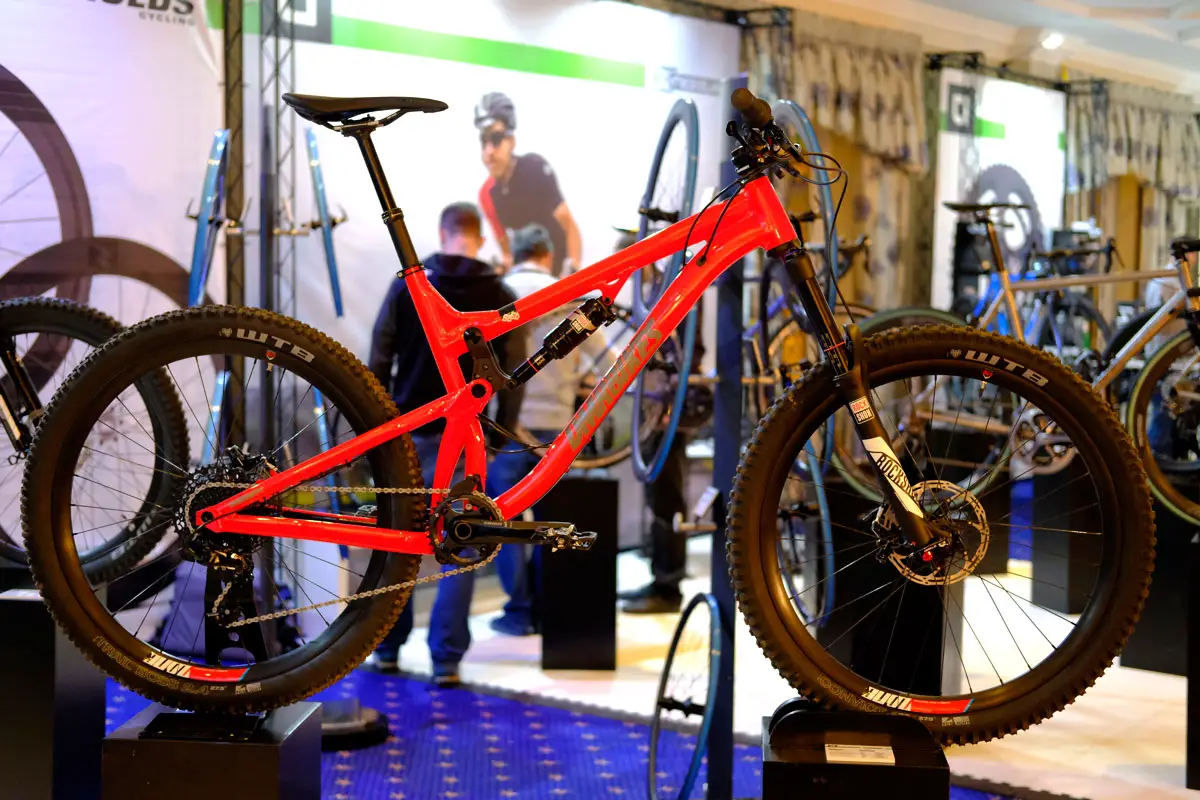

Why is rotating around the BB shell a point of difference from VPP? It’s exactly the same, just a lower pivot location. Whether its round the BB shell or not makes naff all difference.